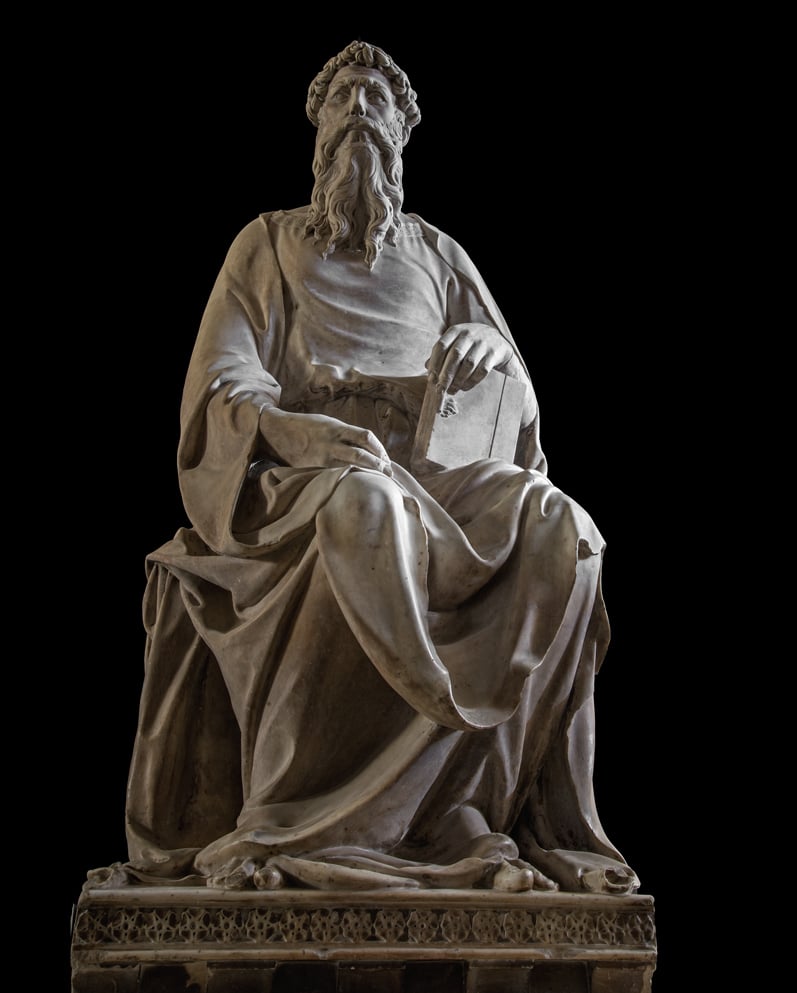Art & Exhibitions
New York’s Museum of Biblical Art Will Close For Good
Attendance had peaked this year at just 20,000.

Attendance had peaked this year at just 20,000.

New York’s Museum of Biblical Art (MOBIA) will close its doors this summer, after operating for a decade. The institution’s current Donatello exhibition (see Discover Renaissance Master Donatello at the Museum of Biblical Art and Donatello Looms Larger Than Life at the Museum of Biblical Art) will remain on view through June 14, as planned, but MOBIA will cease operations on June 30, 2015, the museum announced today.
“Sculpture in the Age of Donatello: Renaissance Masterpieces From Florence Cathedral,” which features 25 pieces from the Museo dell’Opera del Duomo, many of which had never before left Italy, has been a blockbuster by the small museum’s standards. Since opening in mid-February, the show has very nearly surpassed MOBIA’s all-time high for annual attendance with 20,000 visitors.
“It is painfully ironic,” noted board of trustees co-chair Elaine Hirschl Ellis in a statement, “that we must cease existence at the moment the museum has achieved such prominence.”
For comparison, the Whitney Museum of American Art saw 372,000 visitors in 2009–10; the Frick Collection had 420,000 visitors in 2013; the Hirshhorn Museum and Sculpture Garden, in Washington, DC, had 645,000 visitors last year.
“I believe that MOBIA contributes a unique element to the cultural landscape of New York and the entire country, and it is with tremendous sorrow that we close our doors,” said board of trustees co-chair John Fossum in a statement.
Founded in 1997 by the American Bible Society (ABS), MOBIA became an independent museum when it opened its current space on Broadway at West 61st Street in 2005. Until this year, the building had belonged to ABS, which continued to provide financial support. In February, ABS sold the property in anticipation of its move to Philadelphia, leaving MOBIA homeless.

Donatello, St. John the Evangelist
(1408–15).
Photo: Antonio Quattrone © Opera di Santa Maria del Fiore.
Although MOBIA explored its options, the museum ultimately couldn’t afford to lease and potentially renovate a new site, which could have cost up to $5 million a year. Its annual operating budget ranged from $2.5 million to $3.5 million.
“When the sale of the building was announced, that really brought everything to a head and started the clock ticking,” MOBIA director Richard P. Townsend, who joined the institution just two years ago, told the New York Times. “In the end, it just wasn’t enough time. I can’t tell you the various angles, the different angles, that we explored this from.”
Part of the problem may also have been a question of identity, as the museum attempted to straddle the largely secular art world and the Christian community, presenting the Bible as a culturally significant text that inspires artists both historically and today. That distinction may not have always been clear: “Just having the world ‘bible’ in the name says to many people that we’re a conservative, right-wing group, and that could not be further from the case,” a former MOBIA publicist told the Times.
The museum’s next scheduled exhibition, “Power and Piety: Spanish Colonial Art from the Patricia Cisneros Collection,” will instead make its debut in March 2016 at the Society of Four Arts in Palm Beach, Florida, which was planned to be the second stop of a national tour running through 2018.